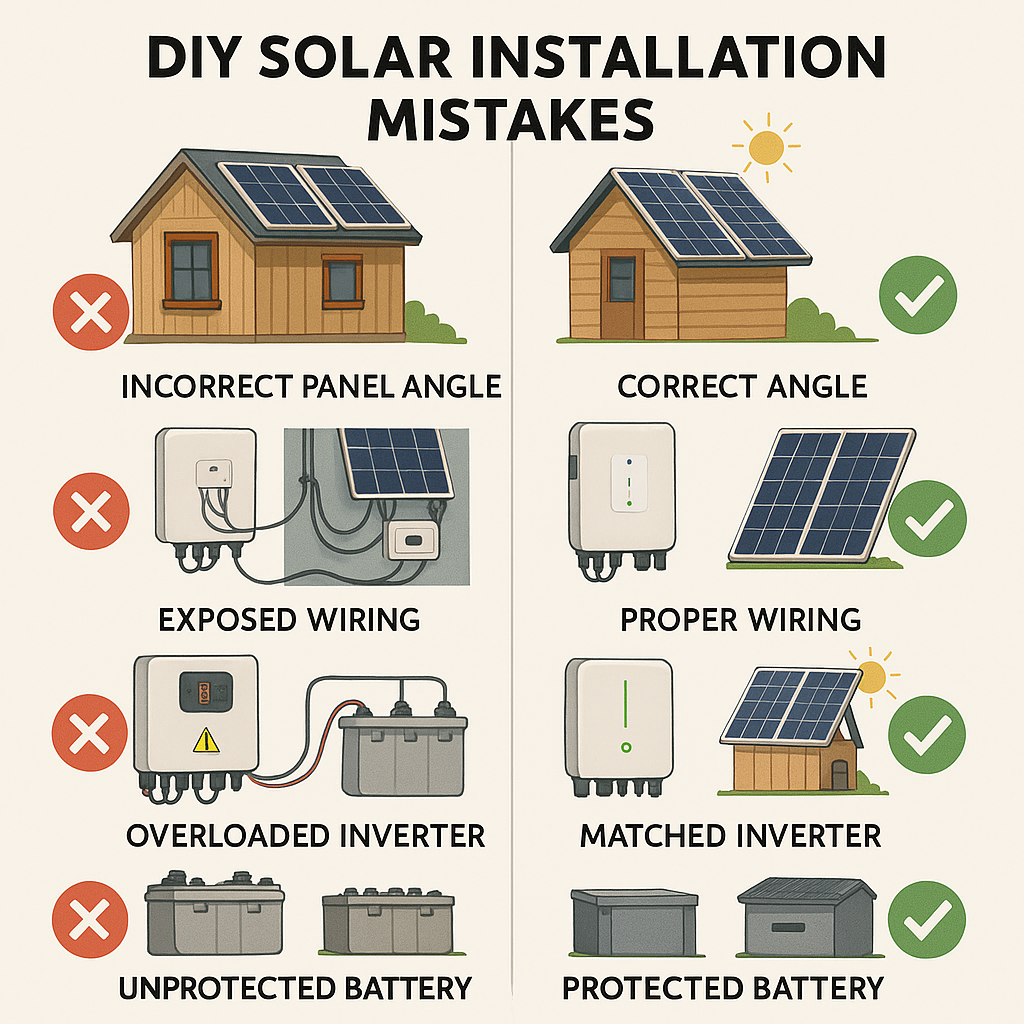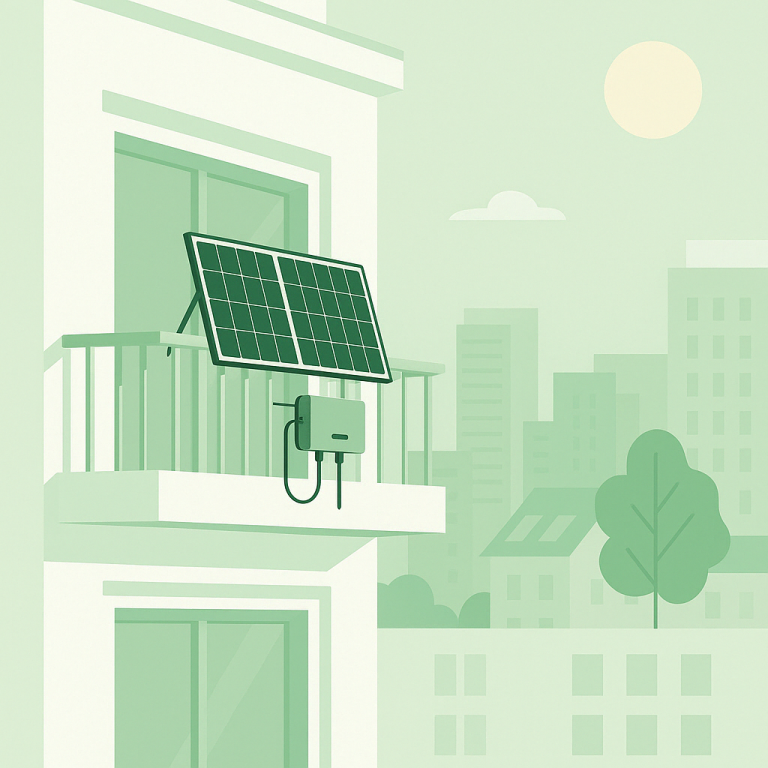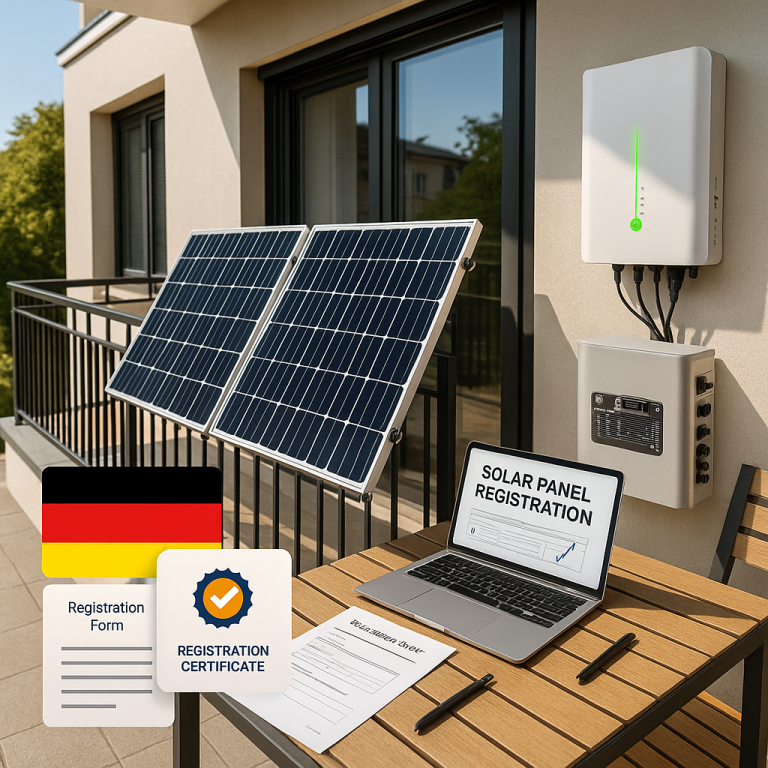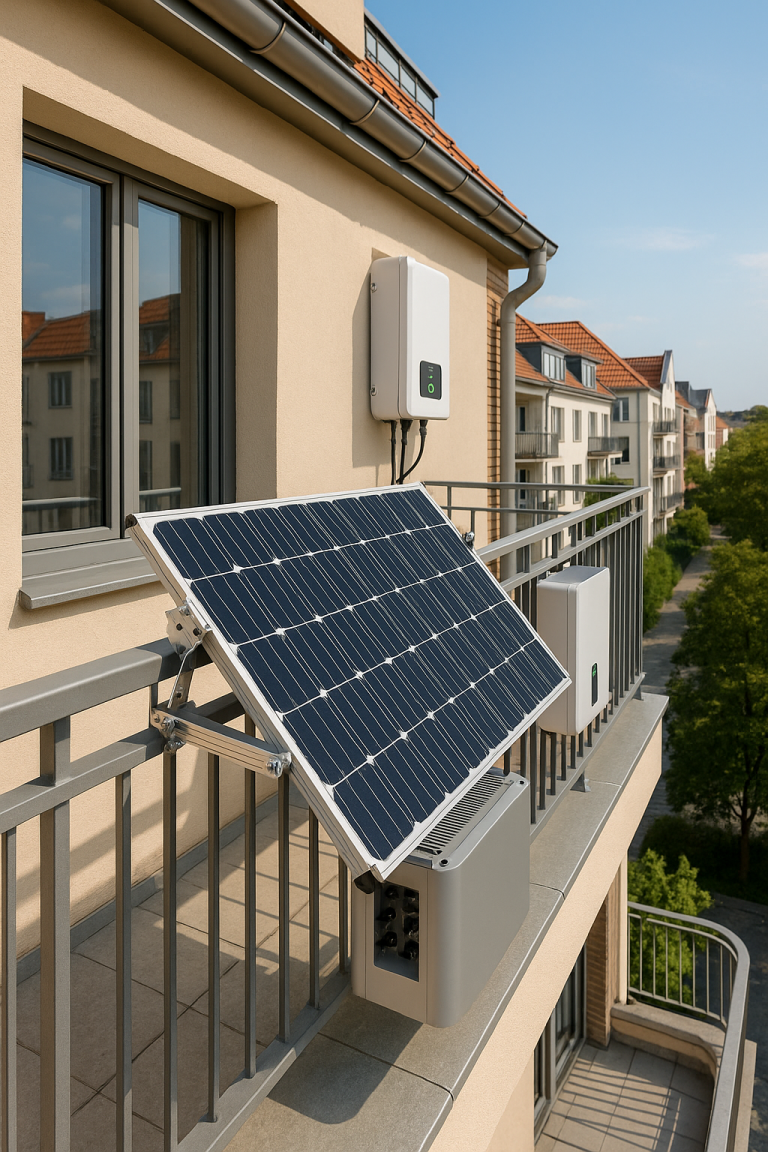1. Introduction: The Allure and Risks of DIY Off-Grid Solar
Embarking on a DIY off-grid solar project offers the promise of energy independence and potential cost savings. However, without proper knowledge and preparation, it can lead to inefficiencies, safety hazards, and unexpected expenses. This guide highlights the top 10 mistakes commonly made during DIY off-grid solar installations and provides actionable advice to avoid them.
2. Mistake #1: Improper System Sizing
One of the most critical errors is miscalculating the energy needs of your household. Underestimating consumption can lead to frequent power shortages, while overestimating results in unnecessary expenses.
How to Avoid:
- Conduct a thorough energy audit to determine daily and peak energy requirements.
- Use reliable calculators or consult with professionals to size your system appropriately.
✅ Internal Link Suggestions
3. Mistake #2: Incorrect Panel Placement and Orientation
Solar panels must be positioned to maximize sun exposure. Shading, improper tilt angles, or incorrect orientation can significantly reduce efficiency.
How to Avoid:
- Ensure panels are installed in areas with minimal shading throughout the day.
- In the Northern Hemisphere, orient panels to the south; in the Southern Hemisphere, orient them north.
- Adjust the tilt angle based on your latitude to optimize sun exposure.
4. Mistake #3: Using Incompatible or Substandard Components
Mixing and matching components without ensuring compatibility can lead to system failures or reduced performance.
How to Avoid:
- Purchase components from reputable manufacturers and ensure they are designed to work together.
- Verify voltage and current ratings match across all system parts.
- Consult datasheets and, if necessary, seek expert advice before purchasing.
5. Mistake #4: Neglecting Proper Wiring and Safety Measures
Improper wiring can cause energy losses, equipment damage, or even fires.
How to Avoid:
- Use wires of appropriate gauge to handle the system’s current load.
- Ensure all connections are secure and protected against environmental factors.
- Incorporate safety devices like circuit breakers and fuses.
✅ Internal Link Suggestions
6. Mistake #5: Overlooking Battery Maintenance and Management
Batteries are the heart of an off-grid system. Neglecting their maintenance can shorten their lifespan and compromise system reliability.
How to Avoid:
- Regularly check battery health and charge levels.
- Implement a proper charging regimen to prevent overcharging or deep discharging.
- Consider using a Battery Management System (BMS) for optimal performance.
7. Mistake #6: Ignoring Local Regulations and Permits
Failing to adhere to local building codes and regulations can result in fines or the need to dismantle your setup.
How to Avoid:
- Research local laws and obtain necessary permits before installation.
- Ensure your system complies with safety standards and zoning requirements.
8. Mistake #7: Skimping on Quality to Save Costs
Opting for cheaper, low-quality components may save money upfront but can lead to higher costs in the long run due to replacements and inefficiencies.
How to Avoid:
- Invest in high-quality components with good warranties.
- Consider the total cost of ownership, including maintenance and potential replacements.
9. Mistake #8: Inadequate System Monitoring
Without proper monitoring, it’s challenging to detect issues or optimize performance.
How to Avoid:
- Install monitoring systems to track energy production and consumption.
- Regularly review system data to identify and address anomalies promptly.
10. Mistake #9: Failing to Plan for Future Expansion
Designing a system that meets only current needs can limit scalability and require costly upgrades later.
How to Avoid:
- Anticipate future energy needs and design your system with scalability in mind.
- Choose components that allow for easy expansion, such as modular battery systems.
11. Mistake #10: Attempting Complex Installations Without Expertise
While DIY projects are rewarding, certain aspects of solar installations require specialized knowledge.
How to Avoid:
- Educate yourself thoroughly before undertaking the project.
- Seek professional assistance for complex tasks or if you’re unsure about any aspect of the installation.
12. Conclusion: Building a Reliable DIY Off-Grid Solar System
Embarking on a DIY off-grid solar project is a commendable step toward energy independence. However, success depends not just on enthusiasm—but on planning, precision, and the right knowledge.
By avoiding the ten most common mistakes listed in this guide, you’ll reduce the risk of system failure, ensure greater energy efficiency, and extend the lifespan of your components—especially batteries and inverters.
Whether you’re powering a remote cabin, a rural home, or preparing for emergencies, the foundation of a stable off-grid system lies in:
- Correct sizing and layout
- Quality components and wiring
- Regulatory compliance
- Realistic planning for maintenance and upgrades
When in doubt, ask professionals for input, and don’t compromise on safety. After all, DIY doesn’t mean going it alone—it means being informed, prepared, and responsible.
✅ External Link Suggestions
CleanTechnica – Real-world Off-grid Solar Tips
Collection of field-tested tips, stories, and equipment reviews from real users around the world.




